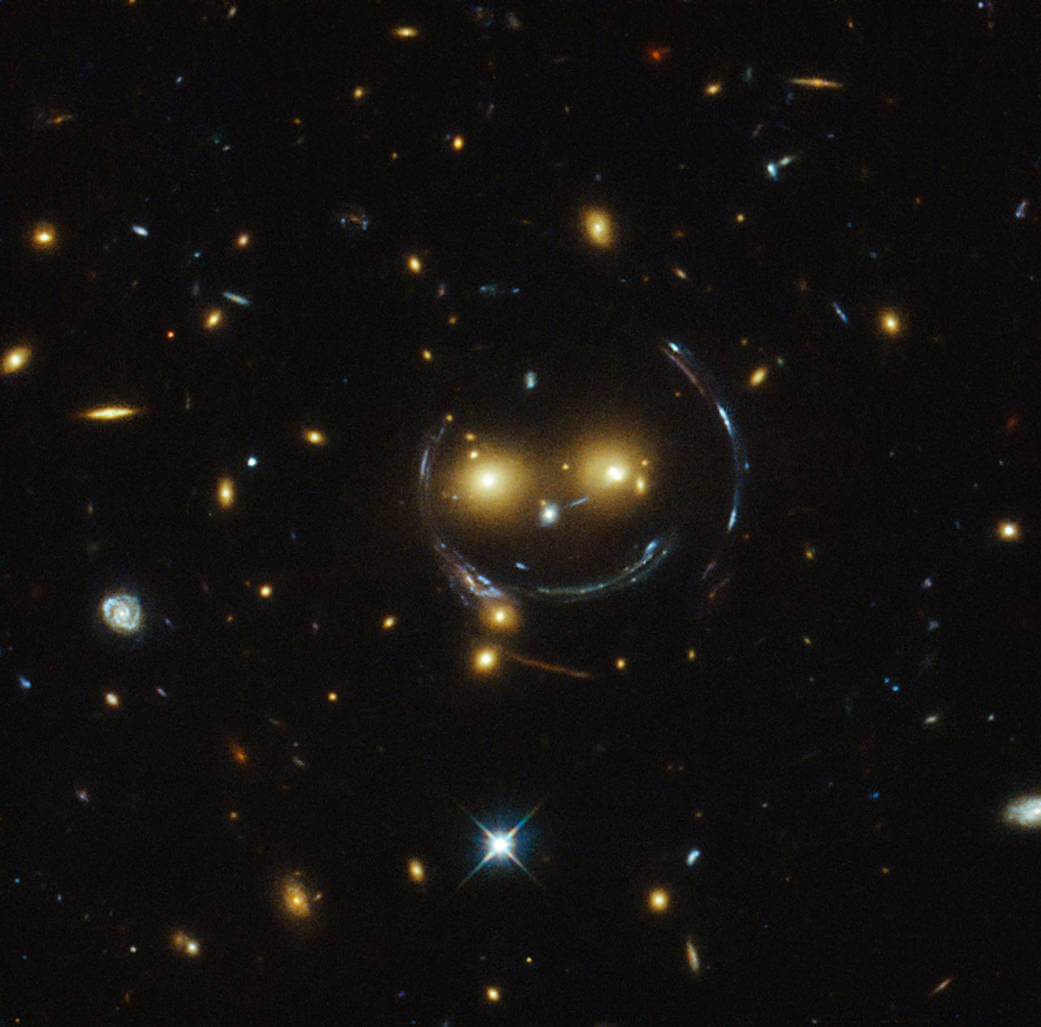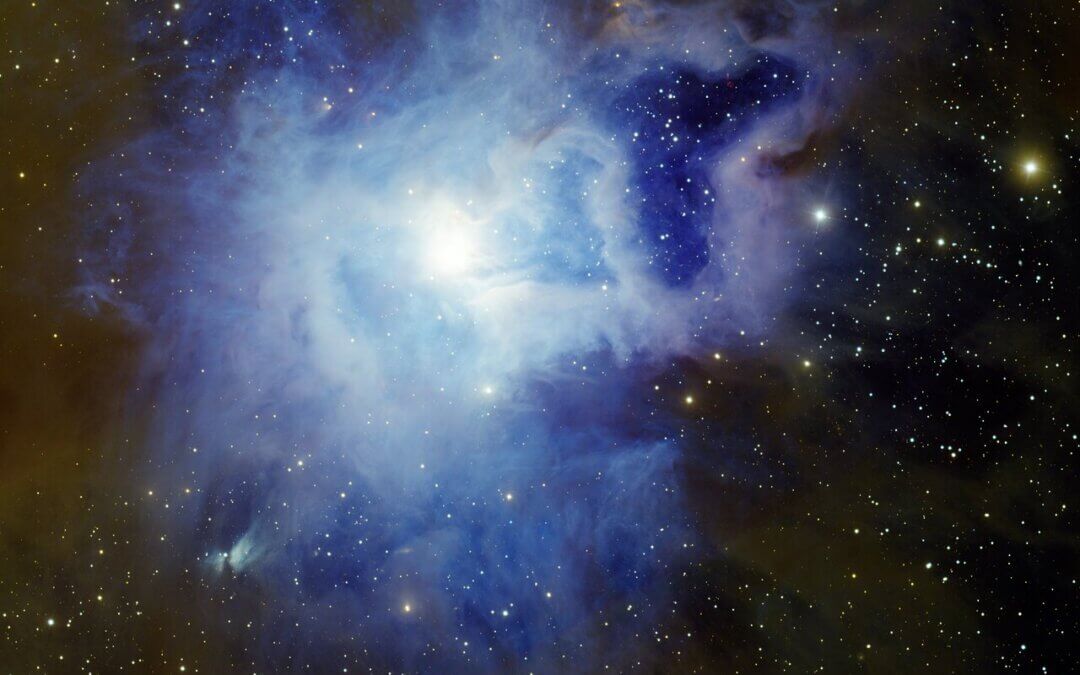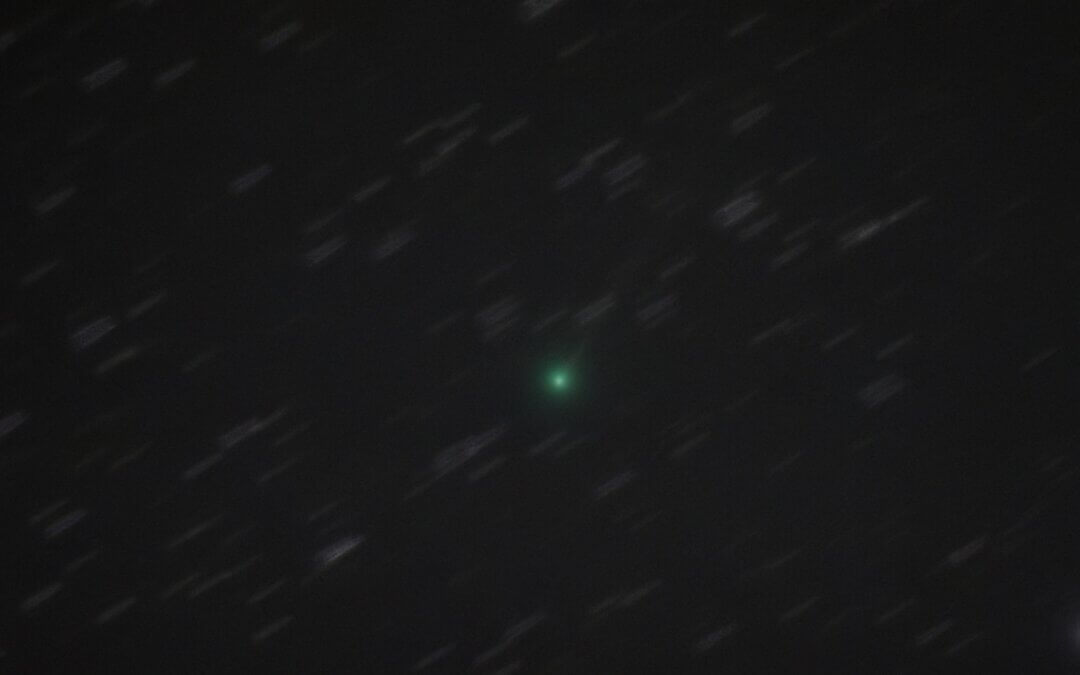On January 12, Comet C/2022 E3 ZTF, a bright comet hailing from the outer solar system, is coming closer to the Sun than it ever has before and likely ever will. Astronomers need observations of this comet to catch any changes in its activity and luckily, the Unistellar Network is in a unique position to contribute to this cause.
As the comet sweeps within about 160 million km (100 million miles) of our Sun, it may show changes in its appearance. During this approach, a comet – an icy ball of dust and rock – often exhibits changes in its tail, arguably its most striking feature that results from cometary ices that turn directly into gas in a process known as sublimation. But the most exciting of these changes that observers may see could come from an outburst, which occurs when a large portion of the comet’s ices sublimate at once or break apart, regularly causing a comet to become up to 100 times brighter! Although outbursts can happen for a variety of reasons, the stress of the Sun’s heat makes them more likely to occur around close approaches like the one on January 12.
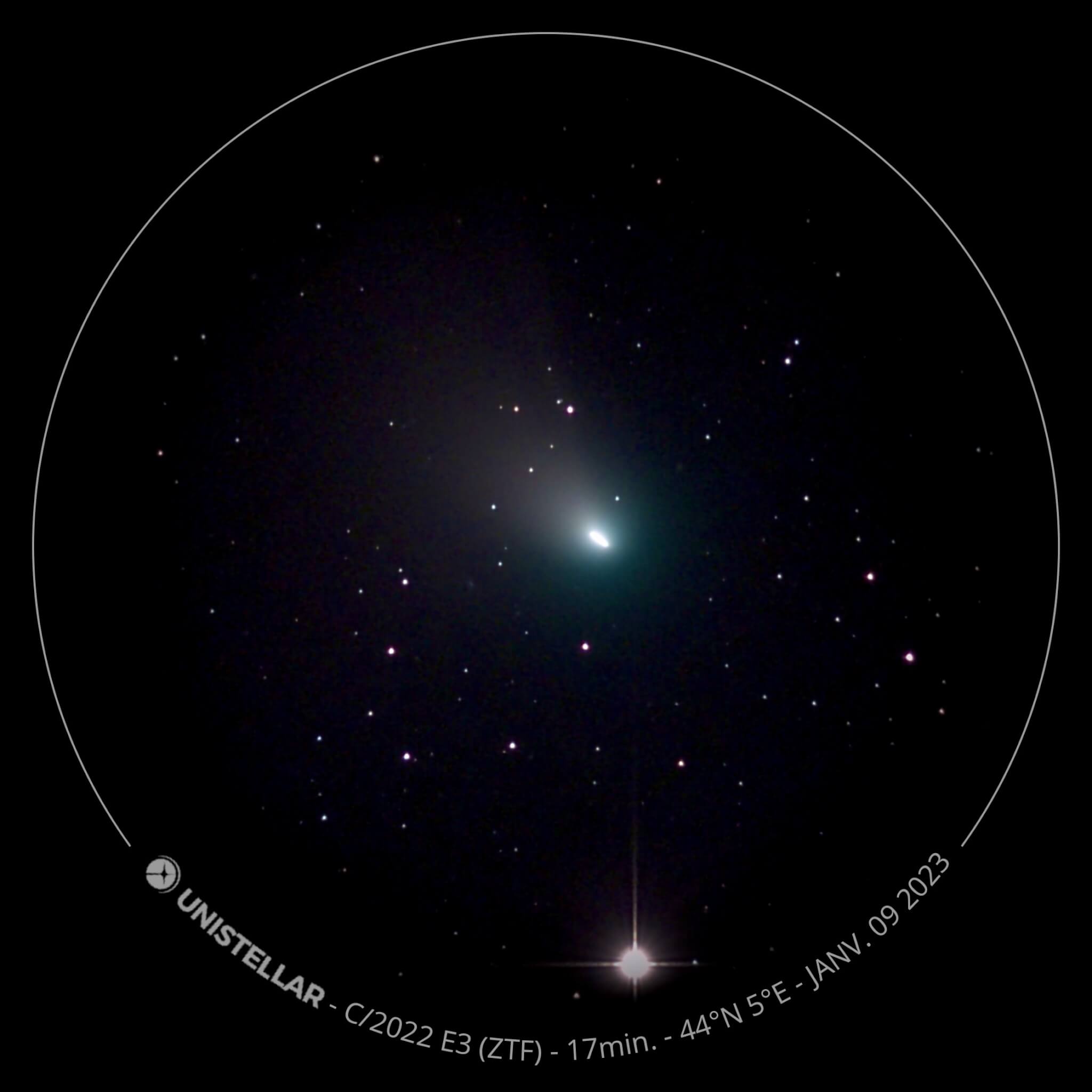
An eVscope image of Comet E3 taken by Citizen Astronomer Patrick P.
Comet E3 may indeed experience an outburst as it nears the Sun, and the Unistellar Network could make it possible to observe an outburst in action. If Unistellar Citizen Astronomers can catch the comet directly before and after an outburst, astronomers could gather the key information they need to know exactly when the outburst occurred and reveal more about what caused it. Events like these are when the unique strengths of the Unistellar Network shine – constant monitoring of this comet by observers around the world could lead to the first detection of an outburst if it occurs.
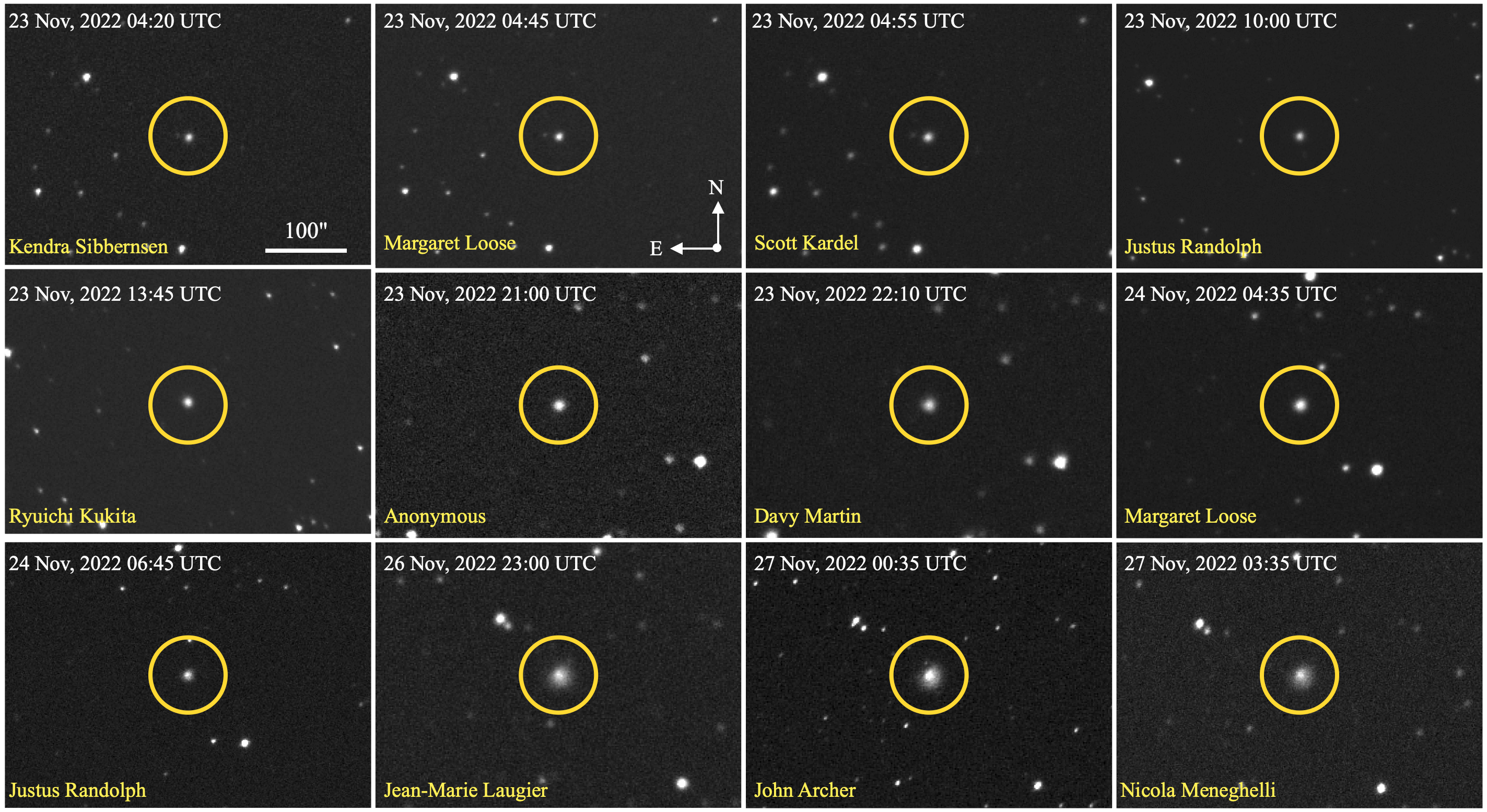
eVscope images from the Unistellar Network of Comet 29P taken shortly after the outburst occurred. You can see the comet getting brighter and its coma spreading as time goes on.
The Unistellar Network has already observed one comet in outburst this year – Comet 29P/Schwassmann-Wachmann 1. Its first outburst caught by Citizen Astronomers took place on November 22 of 2022, and observations before and after show a huge difference in the comet’s brightness. The outburst caused the comet to appear over 35 times brighter than it did before!
If Comet E3 graces us on the globe with an outburst, the Unistellar Network will be there to catch it. The observations could even help determine if the comet will be visible to the naked eye nearing its close approach to our planet on February 1st. Don’t miss your opportunity to watch this comet before it’s gone for good!
How to observe Comet E3 with your Unistellar telescope:
Observations are needed leading up to Comet E3’s close approach to the Sun on January 12! But luckily, you can observe with your Unistellar telescope any time over the coming weeks to contribute your own data.Comet 2022 E3 ZTF is registered in the Unistellar App Catalog, so it’s easy to observe. You’ll be using the Unistellar app’s science mode, which can be found under the Cometary Activity tab.
For more information on how to observe, visit the Tutorial Page. You will point to your target using the instructions detailed under Observation 1a: The comet is in the Unistellar app’s catalog.
In the Recording field enter the following information: 3970 ms / Gain: 25 dB / Duration: 20 min.
You can find more information on our Missions Page.
Further readings
3 Reasons to observe this month
Entdecken Sie jeden Monat drei faszinierende Himmelsereignisse, die Sie mit Ihrem Unistellar-Teleskop beobachten können.
Unistellar Community Included In Multiple Scientific Papers
Did you know Unistellar Citizen Astronomers are often cited in published scientific papers? Find out how you can contribute too!
Neues Update der Unistellar-App: Version 3.0
The latest Unistellar App Update, version V3.0, is now live. Explore a smooth stargazing experience
Halloween Observing Guide: Spooky Deep-Sky Objects
These Halloween deep-sky objects will add some light to those dark, spooky nights. Treats, tricks, and telescopes await!
Fall Into Cygnus and More With September Deep-Sky Objects
Unistellar’s September targets include a bevy of star clusters and nebulae of all sorts. Celebrate stars in all stages of life this month!
See Newfound Comet Nishimura Before it’s Too Late!
Catch newly discovered comet C/2023 P1 (Nishimura) before it flies too close to the Sun and potentially disintegrates!



